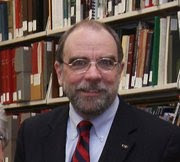The Hidden City Revealed: A Walking Tour (1988)
When I first returned to Cleveland, in 1989, I became aware of a recent project called "The Hidden City Revealed," which seemed to be an archeological study of the Downtown and Flats districts of Cleveland. I just came across the map/brochure for it and see that it was more of a walking tour of early sites in Cleveland, created in 1988 by the Committee for Public Art, with the participation of David S. Brose, Robert A. Wheeler and a host of co-sponsors. Here's how the brochure described the project: | |
"The Hidden City Revealed is a unique walking tour which directs you to artifacts and historic sites that were an important part of the growth of Cleveland's first neighborhoods. This walking tour is not one of signs and words, names, dates and places, nor does it identify empty space where something once existed. Instead you will encounter actual physical evidence of the past and be able to see how history relates to the present day life of the city. The twenty sites on this tour span a time period from Moses Cleaveland's first survey of what was to become the City of Cleveland, to the radical changes imposed upon the cityscape by the dominance of the automobile. Identification and selection of the Hidden City Revealed sites was made by a team of collaborators that included historians, archeologists and designers. Criteria for selection sites included their relative historical and archeological importance , and the visual and/or structural characteristics which give them special interest. These sites are identified by temporary markers. Over the next two years, teams of artists and designers will be commissioned to design, construct and install permanent markers intended to me more than information plaques. They will also be public works of art. Some of the larger sties will be developed as public open spaces; smaller sites will receive a graphic marker. If you follow the sites in the order in which they are listed you will traverse the entire district. It is not, however, necessary to follow the sites in sequential order, you may simply encounter them as part of any walk through the District. This list of twenty sites is not meant to be inclusive, but it is hoped that those which have been listed will make you more award of the historic nature of the neighborhood and its many other artifacts of interest." | |
Like many such historical research projects and exhibits, once it was over it vanished. I don't know if the promised public markers ever materialized, nor whether any still exist, but I'm checking. This tour literature could be recycled and made into a nice web site.
Labels: archeology, Cleveland Ohio, downtown, flats, historic tour, walking tour


<< Home